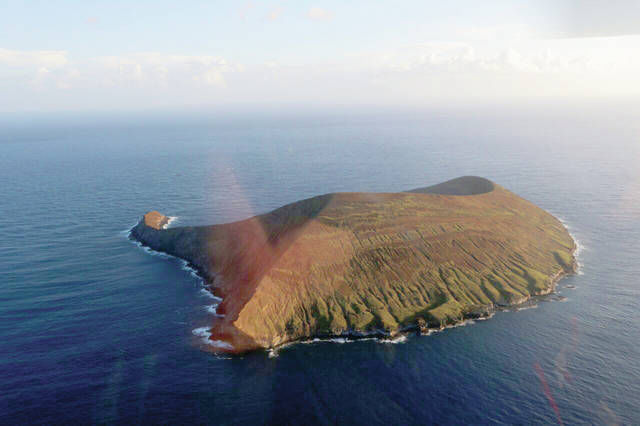HONOLULU — The state’s Department of Agriculture is investigating the poison planned for rat eradication on Lehua Island and could potentially put the brakes on the project scheduled later this month. The intent to “conduct an investigation of the restricted
HONOLULU — The state’s Department of Agriculture is investigating the poison planned for rat eradication on Lehua Island and could potentially put the brakes on the project scheduled later this month.
The intent to “conduct an investigation of the restricted use pesticide DITRAC D-50 PELLETS” was announced in a July 31 confirmation letter to an anonymous person from John McHugh, administrator for the DOA plant industry division.
Three incidents involving the use of Diphacinone between the years of 2003 and 2009 triggered the HDOA investigation — one at Keauhou Ranch on Hawaii Island in 2003, one on Mokapu Island in 2008 and Lehua Island in 2009.
“In the event that the investigation reveals unreasonable adverse effects to humans or the environment have occurred, or are likely to occur, an evaluation of the restricted use pesticide DITRAC D-50 PELLETS will be considered,” the letter states.
The state Department of Land and Natural Resources’ Division of Forestry and Wildlife plans to drop about 10 tons of Diphacinone pellets helicopters over the island over three days this month — on Aug. 8, Aug. 18 and Aug. 29, pending the approval of final permits.
Those permits are an aerial application permit, a National Oceanic and Atmospheric Administration section 7 letter of concurrence, and a Migratory Bird Treat Act permit.
Lehua island lies approximately 18 miles from the western coast of Kauai and 3/4 mile away from a native Hawaiian community resident on the island of Ni’ihau.
The goal of the rat eradication project is to eliminate the rodents and then restore the island’s ecosystem as a sanctuary for birds.
The pesticide planned for use is listed as a restricted use pesticide with the Environmental Protection Agency (EPA) and is a restricted use pesticide in the State of Hawaii.
The state may cancel the license to use the pesticide after HDOA determines that the continued use of the pesticide would result in unreasonable adverse effects on the environment, according to the confirmation letter.
HODA is also required to hold a hearing before the license is canceled.
“HDOA may suspend the license of a pesticide immediately if necessary to prevent an imminent hazard,” the letter states.
As proof of the poison’s safety for use, DOFAW officials cite hundreds of rodent eradication projects done throughout the world and tests on seawater, crabs, fish and opihi when diphacinone was used to eradicate rats from Mokapu Island in 2008, and when an attempt was made on Lehua in 2009.
They also point to the project’s final Environmental Assessments, with a finding of no significant impact to the environment, including endangered species.
“Given that the terrestrial endangered species are extremely rare on or around Lehua, the potential for take of them is extremely low,” DOFAW representatives said in a July 27 statement to TGI. “Also, the kind of bait being proposed, the temporary nature of its use and the time of year chosen to do this operation mitigate for impacts on threatened and endangered species by avoiding times when they are known to actively use places like Lehua.”


